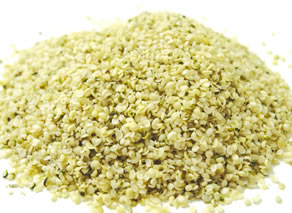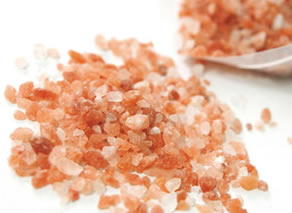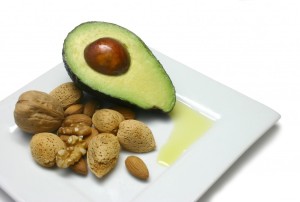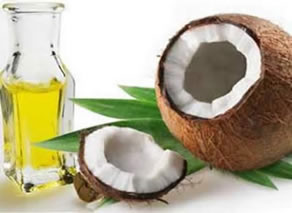By Marco Torres
Guest Writer for Wake Up World
The list of government recommendations on healthy and unhealthy foods over the last several decades have been as reliable as trying to pick the right numbers on a lottery ticket.
There are numerous examples of foods we were told not to consume, but are now at the top of grocery lists thanks to a savvy public who are no longer fooled by irresponsible recommendations based on corporate greed. We have become more informed on the downfalls of short-sighted advice from old-school nutritionists, who really had very little understanding of nutrition at all.
Here are the top 5 things we now know are great for our health, but didn’t used to because of limited perspectives on food education.
1. Coconut Oil
Coconut oil was demonized for years because of its high saturated fat content. In fact, coconut oil has one of the richest sources of saturated fat known to man, with almost 90% of its fatty acid profile being saturated.
Most of the saturated fatty acids are medium chain triglycerides, which assimilate well in the body. Lauric acid is the chief contributor, with more than forty percent of the share, followed by capric acid, caprylic acid, myristic acid and palmitic.
The health benefits of coconut oil include hair care, skin care, stress relief, maintaining cholesterol levels, weight loss, increased immunity, proper digestion and metabolism, relief from kidney problems, heart diseases, high blood pressure, diabetes, HIV and cancer, dental care, and bone strength. These benefits of oil can be attributed to the presence of lauric acid, capric acid and caprylic acid, and its properties such as antimicrobial, antioxidant, anti-fungal, antibacterial and soothing properties.
Many health organizations still advise against the consumption of high amounts of coconut oil due to a lack of understanding of the benefits of specific saturated fats as described above. The United States Food and Drug Administration, World Health Organization, International College of Nutrition, the United States Department of Health and Human Services, American Dietetic Association, American Heart Association, British National Health Service, and Dietitians of Canada still advise against the consumption of coconut oil.
2. Hemp
The extraordinary hemp plant could solve so many problems we face with oil, deforestation, cancer and environmental pollution. Governments are unwilling to acknowledge the incredible diversity of hemp because it is so environmentally friendly, nutritionally and medicinally beneficial, that it provides too many abundant resources which would make it impossible for powerful corporations to compete.

Overall, hemp’s main nutritional advantage over other seeds lies in the composition of its oil, i.e. its fatty acid profile, and in its protein which contains all of the essential amino acids in nutritionally significant amounts and in a desirable ratio.
Hemp protein is also of exceptionally high quality in terms of amino acid (AA) composition and protein structure, the latter affecting digestibility and utilization by the human body. Hemp protein contains all of the essential amino acids in more nutritionally significant amounts and at a ratio closer to “complete” sources of protein (like meat, milk and eggs) than all other oil seeds.
Hemp’s nutritional advantage over other sources of fats and protein thus lies in its highly desirable balance of basic nutrients. Simply put, when eating hemp seed, nut and/or oil, our body obtains much of what it needs without the caloric ballast of non-essential nutrients.
Hemp foods have been steadily expanding onto the shelves of grocery and natural food stores across North America in the last decade.
3. Eggs (Organic)
For years, this misunderstood food — low in calories, high in vitamins (D, B12, folic acid) and nearly perfect in protein — was shunned. An egg contains every single vitamin (except C).
Some government scientists have stated that eating the yolk of an egg is almost as bad as smoking for people at risk of heart disease. The Harvard School of Public Health has stated: “While it’s true that egg yolks have a lot of cholesterol–and so may weakly affect blood cholesterol levels–eggs also contain nutrients that may help lower the risk for heart disease, including protein, vitamins B12 and D, riboflavin, and folate.
It adds that substantial research also suggests cholesterol in food has a much smaller effect on blood levels of total and ‘bad’ (LDL) cholesterol than the mix of fats in the diet.
When eggs are digested they produce proteins that mimic the action of powerful blood pressure-lowering drugs, known as Ace inhibitors.
A recent Surrey University study found eating one or two eggs for breakfast could help with weight loss as the high protein content makes us feel fuller longer.
Many groups have also been against eggs due to allergies, especially for children. However, Pediatrician Fatima Arash, M.D., says that a high percentage of children can eliminate allergy sensitivities by incremental exposures to the allergen, especially eggs. “Under proper supervision, almost 70 percent of egg allergies can be reversed in children before the age of eight by incrementally exposing the immune system so that it gradually tames the defense mechanism and no longer reacts to antigens violently,” she stated.
The only way to ensure you are buying a healthy egg is to visit the farm itself. Ensure farms practices are free of synthetic chemicals of any kind, free of genetically modified organisms in their feed and are producing soils of enhanced biological activity. Do not rely on the USDA organic label which has no interest in organic farming, improving soil, quality of the produce, or factors that pollute the environment.
4. Salt
The pharmaceutical industrial complex has had great influence in scientific journals, medical literature and consequently Physicians in promoting the idea that salt is a baddy. Contrary to public perception, the reason the mantra of “eat less salt” has been advocated so strongly in decades past was due to the higher risk associated with cardiovascular disease which increased profits for pharmaceutical drugs.
Even a recent report commissioned by the Center for Disease Control (CDC) stated that salt is no longer considered a substantial health hazard. What the CDC study reported explicitly is that there is no benefit, and may be a danger, from reducing our salt intake below 1 tsp per day.
A recent study by researchers at the University of Glasgow has revealed that low chloride levels in the blood is an independent indicator of mortality risk in people with hypertension.
 The key is to know the difference between a good salt and bad salt. Table salt is recrystallized where a brine solution is treated with chemicals that precipitate most magnesium and trace minerals. During the drying process, an anti-caking compound is added to the brine and these agents often use sodium ferrocyanide, tricalcium phosphate, calcium or magnesium carbonates, fatty acid salts (acid salts), magnesium oxide, silicon dioxide, calcium silicate, sodium aluminosilicate, and calcium aluminosilicate. The ferrocyanide and aluminosilicate compounds give the most cause for concern. And the iodization of salt, especially as it is used in processed food, poses real problems for those who are sensitive to iodine.
The key is to know the difference between a good salt and bad salt. Table salt is recrystallized where a brine solution is treated with chemicals that precipitate most magnesium and trace minerals. During the drying process, an anti-caking compound is added to the brine and these agents often use sodium ferrocyanide, tricalcium phosphate, calcium or magnesium carbonates, fatty acid salts (acid salts), magnesium oxide, silicon dioxide, calcium silicate, sodium aluminosilicate, and calcium aluminosilicate. The ferrocyanide and aluminosilicate compounds give the most cause for concern. And the iodization of salt, especially as it is used in processed food, poses real problems for those who are sensitive to iodine.
The problem is not salt, it’s the type of salt we use. It takes just half an hour for one meal high in table salt to significantly impair the arteries’ ability to pump blood around the body, alarming research has shown. Blood flow becomes temporarily more restricted between 30 minutes and an hour after the food has been consumed.
Many experts argue that good salt could be just what we need for healing, health and longevity. “These mineral salts are identical to the elements of which our bodies have been built and were originally found in the primal ocean from where life originated,” argues Dr Barbara Hendel, researcher and co-author of Water & Salt, The Essence of Life. “We have salty tears and salty perspiration. The chemical and mineral composition of our blood and body fluids are similar to sea water. From the beginning of life, as unborn babies, we are encased in a sack of salty fluid.”
Mineral salts, says Dr. Hendel, are healthy because they give your body the variety of mineral ions needed to balance its functions, remain healthy and heal. These healing properties have long been recognised in central Europe. At Wieliczka in Poland, a hospital has been carved in a salt mountain. Asthmatics and patients with lung disease and allergies find that breathing air in the saline underground chambers helps improve symptoms in 90 percent of cases.
Dr. Hendel believes too few minerals, rather than too much salt, may be to blame for health problems.
5. High Fat Foods
Government claims based on “their own science” concludes that it’s best to avoid fat because of its extra calories – and saturated fats raise the risk of heart disease. You’ll still see this on most food pyramids regulated by government policy on diet and nutrition. However, just as mandated healthcare policies fail at the federal level, so do those related to nutrition. This low-fat mantra has been questioned for years by clinicians and nutritional scientists – not least because it has failed to halt the obesity epidemic. The fact is, contrary to official advice by our diet dictocrats, high-fat diets lower blood sugar, improve blood lipids, and reduce obesity.
 Experts say the belief that high-fat diets are bad for arteries is based on faulty interpretation of scientific studies and has led to millions being ‘over-medicated’ with statin drugs.
Experts say the belief that high-fat diets are bad for arteries is based on faulty interpretation of scientific studies and has led to millions being ‘over-medicated’ with statin drugs.
One of the problems is that there is consistent inverse association in the percentage of energy coming from fats and sugars. Research published in the journal Critical Reviews in Food Science and Nutrition shows why people find it hard to follow government guidelines to cut their fat and sugar intake at the same time — a phenomenon known as the sugar-fat seesaw.
Research from the Hebrew University of Jerusalem shows that a carefully scheduled high-fat diet can lead to a reduction in body weight and a unique metabolism in which ingested fats are not stored, but rather used for energy at times when no food is available. The results were published in The FASEB Journal under the title “Timed high-fat diet resets circadian metabolism and prevents obesity”.
Faced with mounting evidence, Swedish dietary experts recently made a dramatic U-turn, recommending a low-carb, rather than low-fat, diet for weight loss.
The bombshell came from the Council on Health Technology Assessment, which advises the Swedish government. Based on a review of 16,000 studies, it said the best sorts of food for losing weight were high fat foods which could include anything oils like olive and coconut.
Doctors insist it is time to bust the myth of the role of saturated fat in heart disease. Cardiologist Aseem Malhotra says almost four decades of advice to cut back on saturated fats found in cream, butter and less lean meat has ‘paradoxically increased our cardiovascular risks‘.
So the rules are being rewritten: to lose weight, cut down on carbs and eat more fat.
So what, precisely, is behind this new thinking? It comes down to the effect different foods have on your hormones.
The most important of these hormones, and the one that’s crucial for weight loss, is insulin.
Insulin is the hormone that controls fat storage. A high-carb diet increases the amount of glucose in the bloodstream, which in turn means you produce more insulin. The more insulin the body produces, the more fat gets stored. When the body is exposed to a high-carb low-fat meal, the pancreas works hard at overshooting the secretion of insulin which then causes the excess to be stored as fat. A low-carb and high-fat diet means less insulin, making it easier to lose weight because less fat is then stored.
Previous articles by Marco:
- Woman Shrinks Inoperable Mass, Heals Her Thyroid Disease With Cannabis Oil
- Playing God: 4 Geoengineering Projects Doomed To Fail While Polluting The Earth
- 5 Big Signs The Global Engine of Deceit, Lies and Control Are Coming To End
- Man Heals His Excruciating Pain With Cannabis After A Battery of Pharmaceuticals Failed
About the author:
Marco Torres is a research specialist, writer and consumer advocate for healthy lifestyles. He holds degrees in Public Health and Environmental Science and is a professional speaker on topics such as disease prevention, environmental toxins and health policy.
This article was reposted with the express permission of the kind crew at preventdisease.com

If you've ever found value in our articles, we'd greatly appreciate your support by purchasing Mindful Meditation Techniques for Kids - A Practical Guide for Adults to Empower Kids with the Gift of Inner Peace and Resilience for Life.
In the spirit of mindfulness, we encourage you to choose the paperback version. Delve into its pages away from screen glare and notifications, allowing yourself to fully immerse in the transformative practices within. The physical book enriches the learning process and serves as a tangible commitment to mindfulness, easily shared among family and friends.
Over the past few years, Wake Up World has faced significant online censorship, impacting our financial ability to stay online. Instead of soliciting donations, we're exploring win-win solutions with our readers to remain financially viable. Moving into book publishing, we hope to secure ongoing funds to continue our mission. With over 8,500 articles published in the past 13 years, we are committed to keeping our content free and accessible to everyone, without resorting to a paywall.








